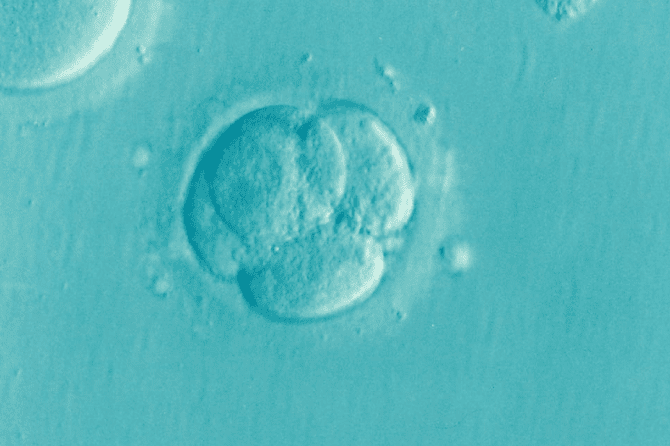When you’re trying to conceive, much of the conversation focuses on timing intercourse, tracking ovulation, and ensuring adequate hormone levels. Yet one of the most critical—and often overlooked—factors in fertility is egg quality. Unlike sperm, which regenerate continuously, women are born with a finite number of eggs whose health and viability decline with age and lifestyle stressors. Improving egg quality isn’t an overnight fix, but by adopting targeted, evidence-based strategies, you can create an internal environment that supports healthier oocytes and boosts your chances of conception. In this comprehensive guide, we’ll explore:
Why Egg Quality Matters
How Age and Oxidative Stress Impact Oocytes
Strategy 1: Optimize Antioxidant Intake
Strategy 2: Support Mitochondrial Health
Strategy 3: Balance Hormones Naturally
Strategy 4: Fine-Tune Your Nutrition
Strategy 5: Adopt Fertility-Friendly Exercise
Strategy 6: Reduce Toxin Exposure
Strategy 7: Manage Stress and Sleep
10. Putting It All Together: A 3-Month Action Plan
11. Frequently Asked Questions
Let’s dive in and give your eggs the best possible environment for growth and maturation.
Why Egg Quality Matters
Every month, a cohort of follicles begins development, but typically only one reaches full maturity and is released at ovulation. The health of that dominant follicle’s egg determines:
Fertilization potential: Damaged DNA or mitochondrial dysfunction can impair sperm binding.
Embryo viability: Poor egg quality often leads to chromosomal abnormalities, increasing miscarriage risk.
Implantation success: A robust embryo from a healthy egg is more likely to implant and thrive.
While you can’t change your chronological age, you can influence the biological milieu that nurtures your eggs.
How Age and Oxidative Stress Impact Oocytes
A. Age-Related Decline
Ovarian Reserve: Declines from your mid-20s, accelerating in your mid-30s.
Chromosomal Errors: Older eggs have higher aneuploidy rates, leading to conditions like Down syndrome or failed implantation.
B. Oxidative Stress
Free Radicals: Byproducts of normal metabolism that damage cell membranes, DNA, and mitochondria.
Mitochondrial Dysfunction: Eggs rely heavily on mitochondria for energy; impaired organelles yield less robust oocytes.
Antioxidant defenses weaken with age and unhealthy habits—so bolstering them is key.
Strategy 1: Optimize Antioxidant Intake
Antioxidants neutralize free radicals, protecting egg structures. Focus on:
Vitamin C & E: Found in citrus, berries, nuts, and seeds.
Coenzyme Q10 (CoQ10): 100–300 mg/day enhances mitochondrial function in oocytes.
Melatonin: 3–6 mg nightly not only regulates sleep but also scavenges oxidative species in ovarian tissue.
Polyphenols: Dark chocolate (70%+), green tea, turmeric (curcumin), and resveratrol from grapes support systemic antioxidant capacity.
Tip: Take CoQ10 with a fat-containing meal for optimal absorption, and space high-dose antioxidants (e.g., vitamin E) apart from blood-thinning medications.
Strategy 2: Support Mitochondrial Health
Mitochondria drive the energy-intensive process of meiosis. To keep them humming:
Acetyl-L-Carnitine (ALC): 500–1,000 mg/day facilitates fatty acid transport into mitochondria.
Alpha-Lipoic Acid (ALA): 300–600 mg/day regenerates other antioxidants and supports mitochondrial enzymes.
Regular Intermittent Fasting (12–14 hours overnight): Encourages cellular autophagy, clearing damaged mitochondria.
Low-Dose Melatonin: Besides antioxidant effects, it upregulates mitochondrial biogenesis.
Tip: Combine ALC and ALA at different times of day—ALA in the morning, ALC midday—to avoid competition for absorption.
Strategy 3: Balance Hormones Naturally
Optimal estrogen and progesterone ratios foster healthy follicle growth and luteal phase support:
Vitex (Chasteberry): 20–40 mg/day can normalize LH and FSH in luteal phase defects.
Inositol (Myo- and D-chiro): 2–4 g/day improves insulin sensitivity in PCOS, reducing androgen excess.
Omega-3 Fatty Acids: 1–2 g/day EPA/DHA reduce inflammation and regulate eicosanoid pathways tied to estrogen metabolism.
Adaptogens: Ashwagandha (300–500 mg/day) and rhodiola (200–400 mg/day) help modulate stress hormones that interfere with reproductive axes.
Tip: Work with a qualified practitioner—adaptogens and phytoestrogens require personalized dosing for best results.
Strategy 4: Fine-Tune Your Nutrition
A fertility-focused diet is both nutrient-dense and low in inflammatory triggers:
Organic, Pasture-Raised Proteins: Eggs, chicken, grass-fed beef—minimize exposure to endocrine disruptors in conventional meats.
High-Folate Vegetables: Spinach, asparagus, Brussels sprouts to support DNA synthesis.
Low-Glycemic Carbs: Quinoa, sweet potatoes, legumes stabilize blood sugar and insulin.
Balanced Plate: Aim for ¼ plate protein, ¼ complex carbs, ½ non-starchy vegetables, plus healthy fats each meal.
Tip: Keep a food journal for 1–2 weeks to identify and eliminate potential allergens or blood-sugar triggers.
Strategy 5: Adopt Fertility-Friendly Exercise
Movement boosts circulation and hormone regulation—but balance is critical:
Moderate Cardio: Brisk walking or cycling 4–5 times/week for 30 minutes maintains insulin sensitivity.
Strength Training: 2 sessions/week preserve muscle mass and metabolic rate.
Mind-Body Practices: Yoga and Qi Gong reduce cortisol and improve pelvic blood flow.
Avoid Overtraining: High-intensity or excessive endurance workouts can raise cortisol and suppress GnRH.
Tip: Track your resting heart rate and energy levels—if RHR spikes or fatigue persists, dial back intensity.
Strategy 6: Reduce Toxin Exposure
Environmental toxins can impair oocyte health at the cellular level:
Avoid Plastics: Use glass or stainless-steel containers; skip heating food in plastic.
Choose Clean Beauty: Fragrance-free, paraben-free products minimize endocrine disruptors.
Detox Safely: Support liver detox with cruciferous veggies (broccoli, cauliflower) and adequate hydration.
Air Quality: Invest in a HEPA purifier if you live in a polluted area; indoor air affects systemic oxidative stress.
Tip: Read labels vigilantly—“fragrance” can hide phthalates linked to poorer gamete quality.
Strategy 7: Manage Stress and Sleep
High cortisol and poor sleep impair egg maturation:
Sleep Hygiene: 7–9 hours/night; keep room cool and dark; limit screens 1 hour before bed.
Evening Routine: Gentle yoga, magnesium-rich bath, or journaling to lower cortisol.
Mindfulness Practice: 10 minutes of meditation or guided imagery daily to stabilize the HPA axis.
Tip: If anxiety persists, consider short-term professional support—CBT or fertility counseling can restore equilibrium.
10. Putting It All Together: A 3-Month Action Plan
Focus | Actions |
———————————-|———————————————————————————————-|
Foundation & Assessment | Complete baseline hormone panel (AMH, FSH, LH, estradiol), start food journal and sleep log.|
Nutrient & Supplement Protocol | Begin CoQ10, ALA/ALC, melatonin, inositol; optimize diet with low-GI, antioxidant foods. |
Lifestyle & Monitoring | Add moderate exercise routine, stress-reduction practices, and retest AMH or cycle metrics. |
By month three, you should notice more regular cycles, improved energy, and—importantly—enhanced markers of ovarian reserve and egg health.
Frequently Asked Questions
How long does it take to improve egg quality?
While egg maturation takes about 90 days, many women notice improved cycle regularity and energy within 1–2 months of targeted interventions; full benefits often emerge after 3–6 months.
Can supplements really change my ovarian reserve?
Supplements like CoQ10 and inositol support the quality of developing oocytes rather than increasing quantity. They enhance mitochondrial function and reduce oxidative damage.
Is age the biggest factor in egg quality?
Age is a primary determinant, but lifestyle factors—oxidative stress, hormone imbalances, toxins, and poor nutrition—exacerbate age-related decline. Addressing these can optimize the health of your remaining eggs.
Are there any risks with high-dose antioxidants?
Excessive antioxidant dosages can interfere with cellular signaling. Stick to evidence-based ranges (e.g., CoQ10 100–300 mg, vitamin E ≤400 IU) and cycle antioxidants with other nutrients.
Can men support egg quality indirectly?
Yes—male partners should optimize their sperm quality through antioxidants, healthy fats, and avoiding heat exposure, thereby reducing DNA-fragmented sperm that can affect embryo viability.
Should I track AMH or do antral follicle count (AFC) during optimization?
AMH and AFC provide baseline ovarian reserve data; retesting every 3–6 months can indicate stabilization or improvement in cycle dynamics, though true reserve cannot increase.
How do I know if I’m overtraining for fertility?
Signs include elevated resting heart rate, persistent fatigue, disrupted periods, and mood changes. If noted, reduce intensity or frequency and reintroduce mind-body practices.
When should I consider assisted reproductive technologies (ART)?
If you’ve optimized lifestyle and supplements for 6–12 months without conception—especially at age 35+—consult a reproductive endocrinologist about IVF or IUI options, which can further mitigate egg quality challenges.
—
Improving egg quality is a multifaceted endeavor—one that blends nutrition, targeted supplementation, stress management, and healthy habits. By following these seven natural strategies and committing to a structured 3-month plan, you’ll enhance your ovarian environment, support healthier oocytes, and increase your chances of achieving a successful pregnancy. Good luck on your journey to parenthood!










